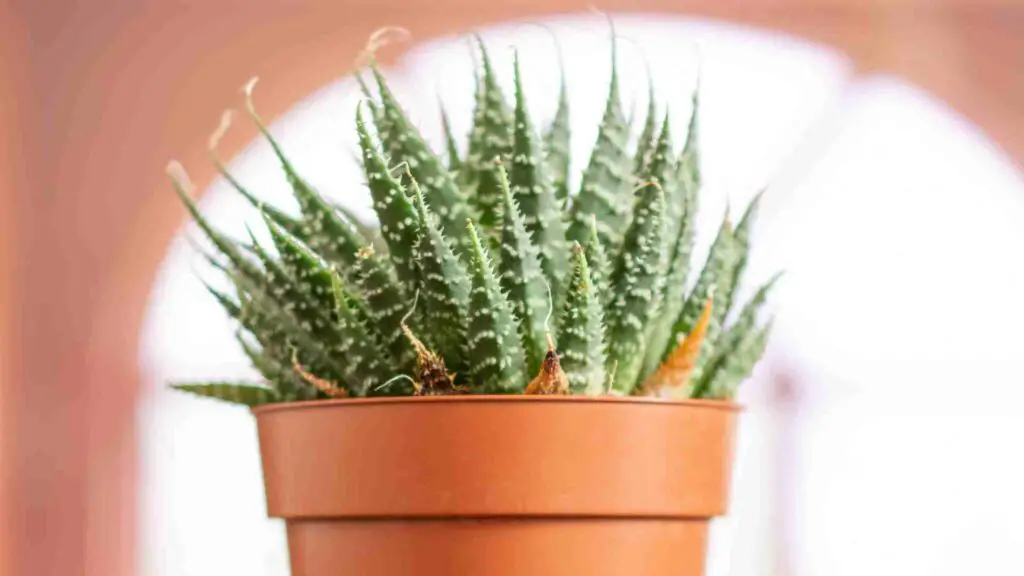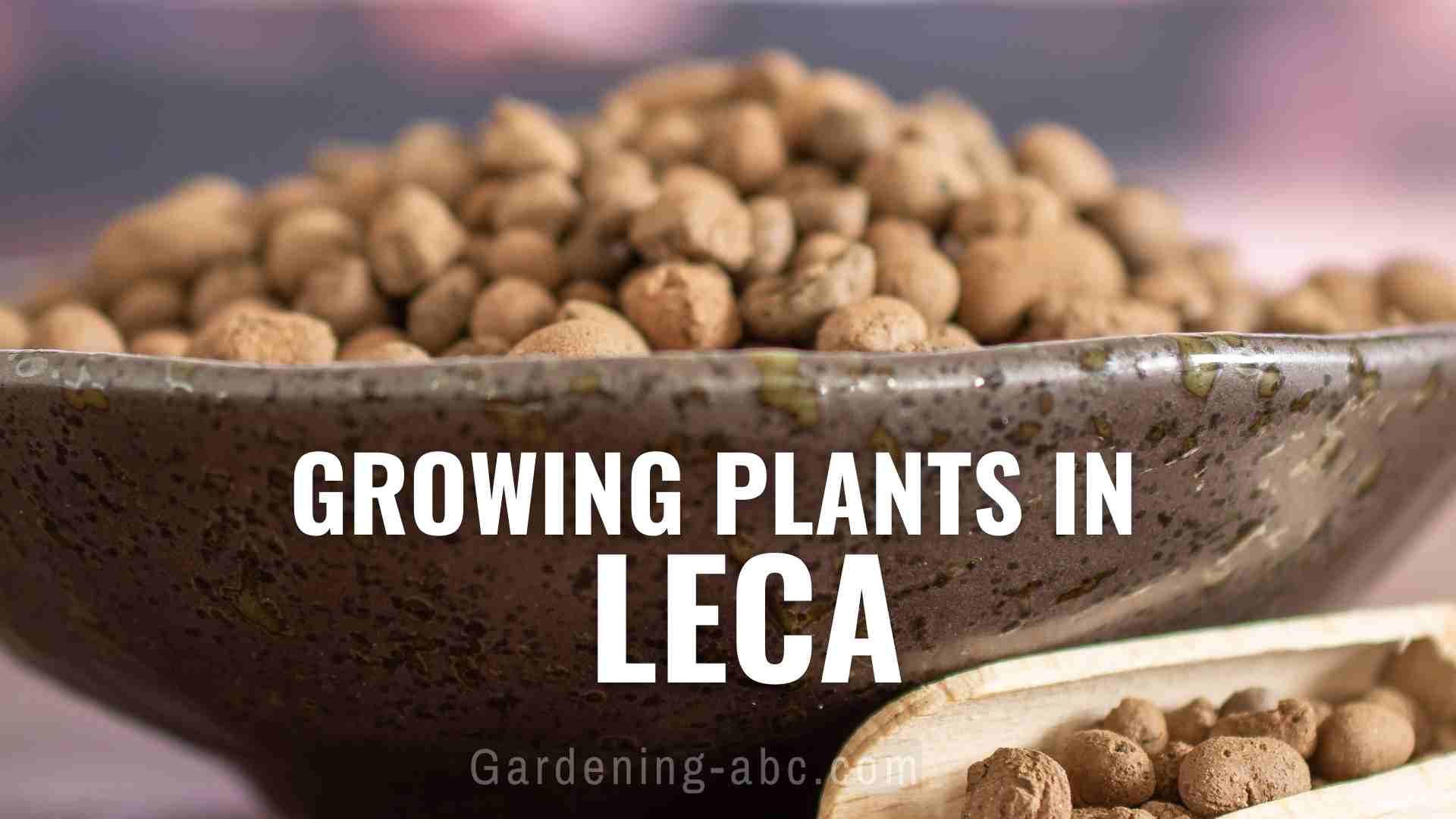We use affiliate links to run our site. When you buy through links on our site, we may earn an affiliate commission, without any added cost to you. Learn more
Soilless gardening is constantly growing throughout the world and people are trying out different soulless mediums to grow plants. In our earlier post, we covered some of the most popular soilless growing mediums.
Here in this post, we will discuss what is LECA, what is its pros and cons, and how to keep your plants healthy and thrive in LECA clay pebbles.
If you are interested in growing plants in LECA or have never heard about it you will find this post informational.
What exactly is LECA?
LECA is an acronym for Light Expanded Clay Aggregate. It is a lightweight, porous ceramic material made by heating clay to high temperatures in a rotary kiln. The high temperatures cause the clay to expand and create small, air-filled pores.
These pores make LECA ideal for use as a growing medium because they improve drainage and aeration while still providing enough moisture and nutrients for plants.
LECA is used in horticulture as a medium for hydroponic plants, as well as in aquaculture and aquaponics.
One of the main benefits of using LECA for plants is that it does not compact like other growing media, which allows for better root growth and aeration.
Why is LECA useful for growing your plants?
LECA is a type of expanded clay that is frequently used in hydroponic systems. LECA has a number of benefits that make it ideal for growing plants. Here are the main benefits of using LECA for plants:
It’s easier to water your plants:
When you use LECA, you can create a false bottom and raise your plants’ roots from the bottom of the pot. Your clay balls will start to soak up the water in the pot, this will keep the roots away from the water.
Less risk of root rot:
As the roots don’t sit directly in the soil there is no chance of the root getting waterlogged. Which eventually means less risk of root rots for the plant.
Lesser or no pests around:
One of the main benefits of using LECA is it is pest free. There is no living organism in the medium so you won’t see nematodes or aphids in your plants.
Reusable:
You can use LECA clay balls over and over again. So although it can be a bit pricey you just have to buy it once and you can use the same growing medium for years. Just make sure you clean the balls thoroughly before using them again.
Not Messy:
One of the main benefits is that it is not messy. You do not have to worry about soil or water getting everywhere when you are using LECA. These clay balls are literally dust-free and ready to use as a growing medium.
Less space:
LECA needs very little storage compared to traditional houseplant growing methods. So you don’t need to store big bags of soil. Also as clay balls are all the same so unlike soil, you don’t need different types of mixes for different plants.
How do you fertilize your plants in LECA?
LECA is an inert material that does not provide any nutrients to plants, so fertilization is necessary. There are many ways to fertilize plants in LECA, and the best method depends on the type of plant.
Being a lightweight and porous medium LECA is commonly used as a substrate for hydroponic systems. So you can easily fertilize plants with liquid or granular fertilizers. In general, it is best to use a liquid hydroponic fertilizer like this that can be absorbed by the roots.
Carefully follow the instructions on the fertilizer label to ensure that your plants get the nutrients they need.
lECA vs soil:
LECA and soil are two common substrates used in hydroponic systems. Although they are both effective in supporting plant growth, there are some key differences between the two.
LECA is a lightweight clay aggregate that is often used as an alternative to soil. They are made from clay pellets that are fired in a kiln. LECA is sterile and contains no nutrients, so it must be supplemented with fertilizer.
Soil is a natural medium that contains a variety of minerals and nutrients that plants need for growth.
Soil is heavier and more difficult to work with but it holds more nutrients and moisture. LECA on the other hand, is a lightweight, porous clay that can be easily manipulated and provides good drainage.
lECA vs perlite:
In gardening, LECA and perlite are two growing mediums that are often used to improve drainage and aeration in the soil. They are both made from volcanic rock, but LECA is fired at a higher temperature, which makes it more lightweight and porous. Perlite is not fired, so it retains more moisture.
Although they have different physical properties, they are both effective at improving drainage and aeration in the soil.
LECA is made from fired clay, while perlite is a type of volcanic glass. LECA is heavier than perlite, but perlite has a higher water-retention capacity.
Disadvantages of lECA:
LECA, or light expanded clay aggregate, is a popular substrate for growing plants. While LECA has many benefits, there are also some drawbacks to using it.
Here are some potential drawbacks of using LECA for plants that you should consider.
LECA is expensive:
One of the biggest disadvantages of LECA is the cost. It can be quite expensive to purchase LECA, especially if you need a lot of it.
If you are used to growing plants in the soil you will be amazed how expensive it can get to switch all your plants to LECA clay balls.
Availability:
In addition, LECA is not always readily available and may need to be specially ordered from a nursery or gardening supply store. Although you can avoid this problem by ordering online, the options are still limited compared to other growing mediums.
You Have to Buy a Fertilizer
LECA does not contain any nutrients, so you have to add fertilizer separately. Unlike soil where you can add compost or manure which are pretty cheap here, you will need hydroponic fertilizers that are much more pricey.
You May Have to Buy New Pots and Other Tools
For growing plants in LECA you need to separately invest in pots and other tools. Traditional pots with holes at the bottom do not work well with LECA growing mediums, you need closed bottom vessels.
Also, you have to have a pH monitoring tool. This is crucial for growing plants in LECA.
Best plants to Grow in LECA:

Usually, most of your houseplants will grow well in LECA. But there are some plants that do exceedingly well. Here are some of the plants that are best suited to grow in LECA.
Orchids:
Orchids are beautiful, easy-to-care-for plants that make a great addition to any home. They come in a wide variety of colors and sizes and can be grown both indoors and out.
Orchids prefer bright, indirect light and well-drained soil. Water them once a week, allowing the soil to dry out between waterings.
Snake Plants:
Snake plants are perfect for beginner gardeners or those with little time to care for their plants. These tough plants can tolerate low light and infrequent watering, making them ideal for busy households.
Snake plants prefer well-drained soil and should be watered only when the top inch of soil is dry. Snake plants can do exceptionally well in LECA.
Monstera:
Monstera is a tropical plant that is often seen in homes and offices. It is easy to care for, requiring little water or maintenance.
Some Basic Tips to get started in growing plants in LECA:
- 1. start off with younger plants that have less dense root systems. You can also use cuttings propagated in water.
- 2. Always invest in tools like a pH monitor. You should be monitoring the pH level regularly.
- 3. Add hydroponic fertilizers regularly. LECA does not contain any nutrients, so plants will be depending on you for nutrients from outside.
- 4. like any other skill growing plants in LECA will need some time to adapt, so initially don’t go for exotic plants and start with the inexpensive ones. Once you develop some skills then switch to the plants you adore.
Frequently Asked Questions
-
What is the full form of LECA?The full form of LECA is Lightweight Expanded Clay Aggregate
-
What are LECA clay pebbles?
LECA clay pebbles are small, lightweight pieces of fired clay. They are often used in hydroponic gardening as a way to support plants and help aerate the roots.
-
Is LECA good for every plant?
-
Can you mix LECA with soil?
Yes, you can mix LECA with soil. LECA is inert and does not break down over time, so it can be mixed to improve soil aeration and drainage while also retaining water.
-
How often do you water a LECA plant?
Although the watering needs of every plant are different generally, you should water a LECA plant about once a week, or when the top layer of the soil starts to dry out.
-
Do I have to use fertilizer when using LECA?
Yes. LECA doesn’t have any nutrients of its own, so you have to add nutrients from outside. Use hydroponic fertilizers like the one I mentioned above.
-
Can I reuse LECA to grow plants?
Yes, you can reuse LECA to grow plants. Just make sure to clean it before using it again.
Conclusion:
In conclusion, LECA is a great addition to any gardener’s toolkit. It is versatile and can be used for a variety of purposes, including aeration, drainage, and plant food.
While LECA has some drawbacks, it can still be a good option for growing plants if you are aware of these disadvantages and take steps to mitigate them.
I hope this post was helpful to you. You can find more about other growing mediums in this post, make sure you read it.
If this post helped you anyway please share it with others also.
Amazon and the Amazon logo are trademarks of Amazon.com, Inc, or its affiliates.

Hi there! My name is Prasenjit and I’m an avid gardener and someone who has grown a passion for growing plants. From my hands-on experience, I have learned what works and what doesn’t. Here I share everything I have learned.
